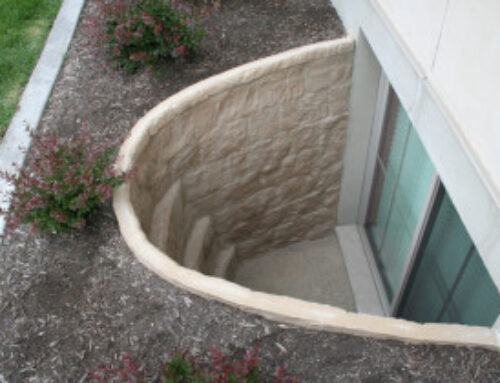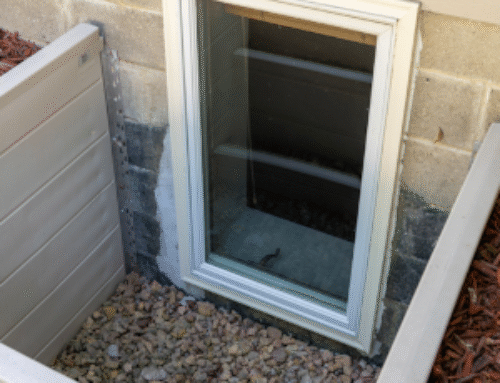Egress windows are essential safety features in any home, particularly in basements and bedrooms where traditional exits may not be accessible. Designed to provide a safe escape route during emergencies like fires, these windows are also required by building codes in many areas.
However, not all egress windows are alike. Choosing the right type involves considering your available space, local code requirements, your home’s layout, and your personal style preferences.
In this guide, we’ll explore the most common types of egress windows, their pros and cons, and how to determine which option best suits your needs.
Casement Egress Windows
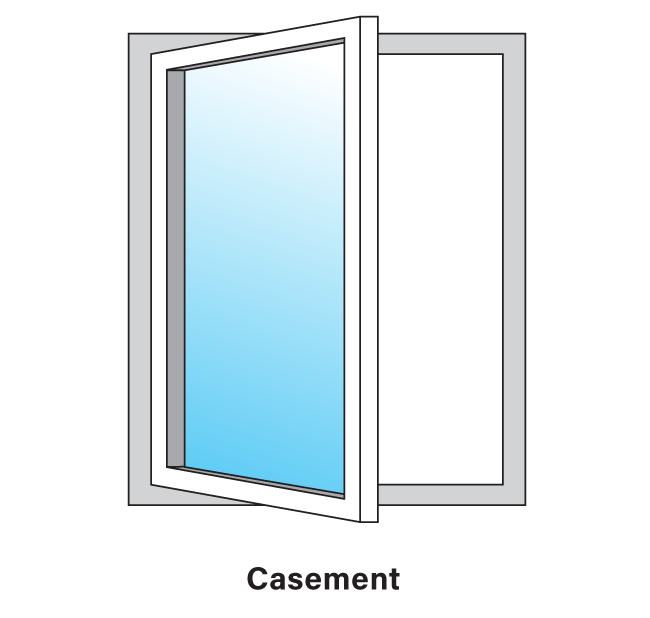
Casement windows are hinged at the side and open outward using a hand crank, making them a popular choice for egress window applications. They are ideal for narrow wall openings because the entire window pane can swing open to provide the maximum possible escape area.
Their design also allows for excellent ventilation and unobstructed views, making them both functional and aesthetically pleasing.
Pros:
- Typically meets egress codes easily
- Seals tightly for energy efficiency
Cons:
- More moving parts can mean higher maintenance
- Generally, more expensive than other types
Best For: Small basement spaces where every inch counts
Avoid: Areas where the crank handle could be obstructed by furniture or fixtures
Sliding Egress Windows
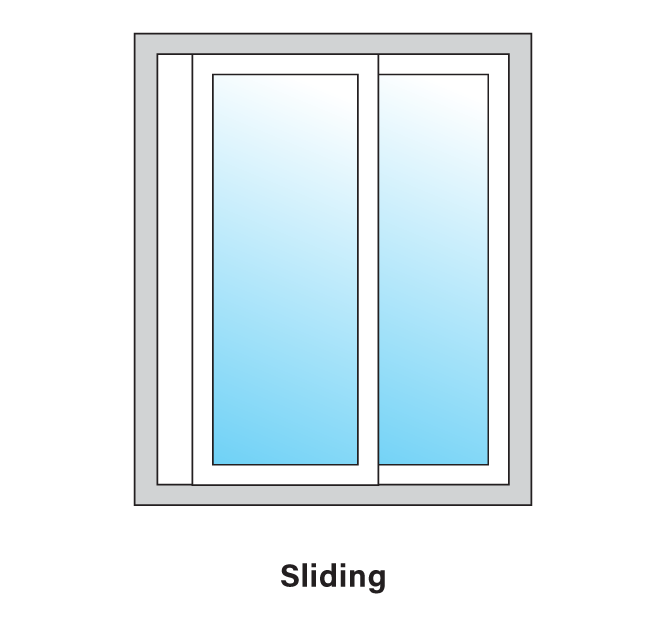
Sliding egress windows feature one or more sashes that slide horizontally along a track, making them easy to open and close. These windows are a great space-saving option since they don’t require additional clearance to open inward or outward.
However, homeowners need to ensure the openable portion of the window is large enough to meet code requirements, as not all sliding windows qualify for egress use.
Pros:
- Easy operation and space-saving design
- Clean, contemporary aesthetic
Cons:
- May require larger opening dimensions to meet codes
- One panel remains fixed, limiting full access
Best For: Wide window wells with ample horizontal space
Avoid: Narrow window wells or tight wall spaces
Double-Hung Egress Windows
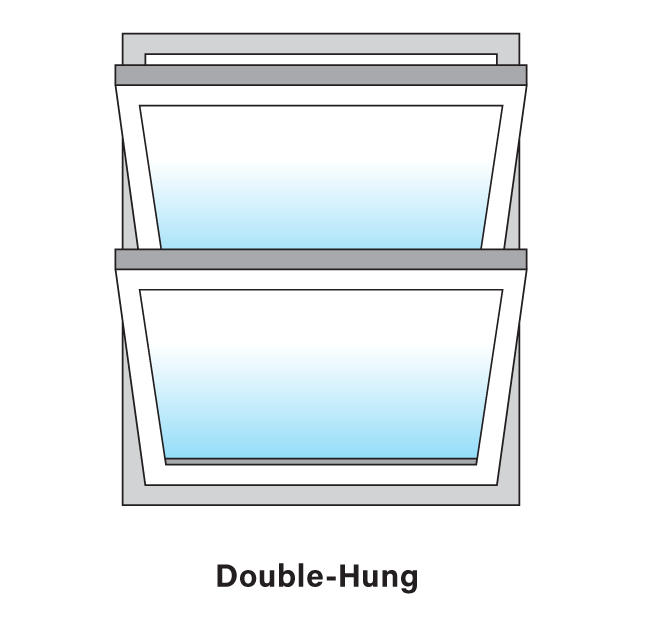
Double-hung windows consist of two sashes that move vertically within the frame, allowing for ventilation from the top, bottom, or both. While they offer a traditional look that fits well with many architectural styles, they can be more challenging to configure for egress purposes due to limited space.
In most cases, only one sash can be opened wide enough, so the window must be carefully sized to meet minimum height and width standards.
Pros:
- Easy to clean from the inside
- Versatile and widely available
Cons:
- Often doesn’t provide a large enough opening to meet codes unless oversized
- Can be drafty if not properly sealed
Best For: Homes aiming for a traditional look with large wall openings
Avoid: Tight basement spaces with limited vertical clearance
In-Swing and Out-Swing Egress Windows
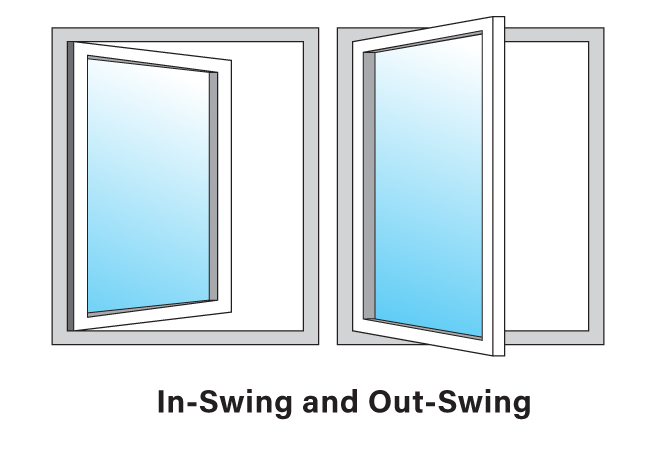
In-swing and out-swing windows operate similarly to doors, swinging open either inward or outward on side hinges. These windows can offer a wide and accessible opening for emergency exits, but they do require clear space on either the inside or outside to function properly.
This makes them ideal for areas without obstructions, but less suitable for tight spaces or heavily furnished rooms.
Pros:
- Versatile opening direction
- Can be customized for tight or awkward spaces
Cons:
- In-swing versions may interfere with interior furniture
- Out-swing models can be obstructed by landscaping
Best For: Custom basement remodels or unusual layouts
Avoid: Spaces with interior or exterior obstructions
Hopper Windows
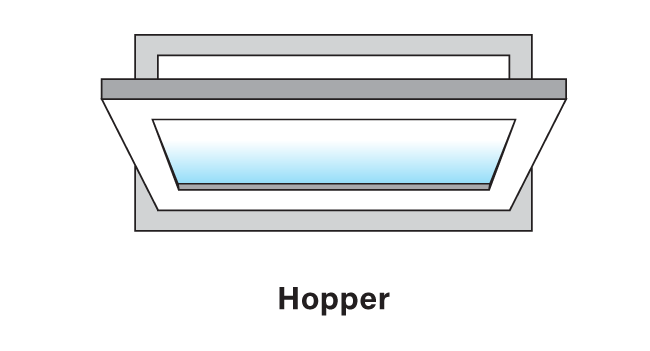
Hopper windows are hinged at the bottom and open inward from the top, typically using a simple latch mechanism. They are often installed in small basement areas where space is limited and additional ventilation is needed.
While useful in compact spaces, hopper windows rarely meet the minimum dimensions required for egress and are generally not considered compliant unless custom-sized and carefully designed.
Pros:
- Opens inward to save space in tight areas.
- Offers ventilation while maintaining security.
Cons:
- Smaller opening can hinder emergency escape.
- Can let in water or debris if left open.
Best For: Any finished basement used for sleeping or as a living space
Avoid: Unfinished basements with no plan for use as a living space
Egress Window Requirements
1. Minimum Opening Size
Building codes (such as the International Residential Code) require that an egress window must have a minimum clear opening of 5.7 square feet (or 5.0 square feet for ground-floor windows).
- Casement windows often meet this requirement easily because they swing outward, allowing for a large opening without requiring an oversized frame.
- Sliding windows need a wider frame to achieve the required opening size since only half of the window opens at once.
- Double-hung windows can also be more challenging because both sashes move, and the clear opening is limited to the size of one open sash. Often, a larger double-hung window is needed to comply.
Impact on Installation: Choosing a sliding or double-hung window may require purchasing a bigger (and more expensive) window unit to meet the code, potentially adding to the material cost.
2. Minimum Opening Height and Width
The minimum clear opening height must be at least 24 inches, and the minimum clear width must be at least 20 inches.
- Casement windows typically exceed both height and width requirements with no problem because the entire window opens outward.
- Sliding and double-hung windows must be carefully selected and measured since part of the window remains fixed or partially closed, shrinking the clear opening size.
Impact on Installation: Incorrect window sizing can lead to the need for expensive modifications after inspection.
3. Maximum Sill Height
The bottom of the egress opening (the sill) cannot be more than 44 inches above the finished floor.
- Basement installations often require digging down or building up the interior floor to meet this requirement.
- Casement and in-swing windows are often chosen for basements because they maximize the opening space while fitting lower to the ground.
Impact on Installation: If the existing sill height is too high, additional construction work like adding interior steps or modifying the wall may add to the project.
4. Window Wells for Below-Grade Windows
When an egress window is installed below ground level, a window well is required.
The window well must provide a minimum horizontal area of 9 square feet with a minimum dimension of 36 inches in both length and width.
If the well is deeper than 44 inches, it must include a permanently attached ladder or steps to allow easy escape.
- Casement windows work especially well with deeper window wells because their outward swing doesn’t require extra interior space.
- Sliding and double-hung windows can sometimes be awkward with smaller wells since part of the window frame remains stationary, slightly reducing ease of exit.
Frequently Asked Questions
Finding The Perfect Match
Choosing the right egress window means balancing safety, function, and style. Whether you’re finishing your basement, updating old windows, or building new, it’s critical to install windows that meet building codes and fit your space and design vision.
Let Crossroads Foundation Repair help you make the safest and smartest choice.
Our experienced team can assess your home, recommend the best egress window solution, and handle the installation from start to finish.
Contact us today to schedule a consultation and bring light, safety, and value to your home.

